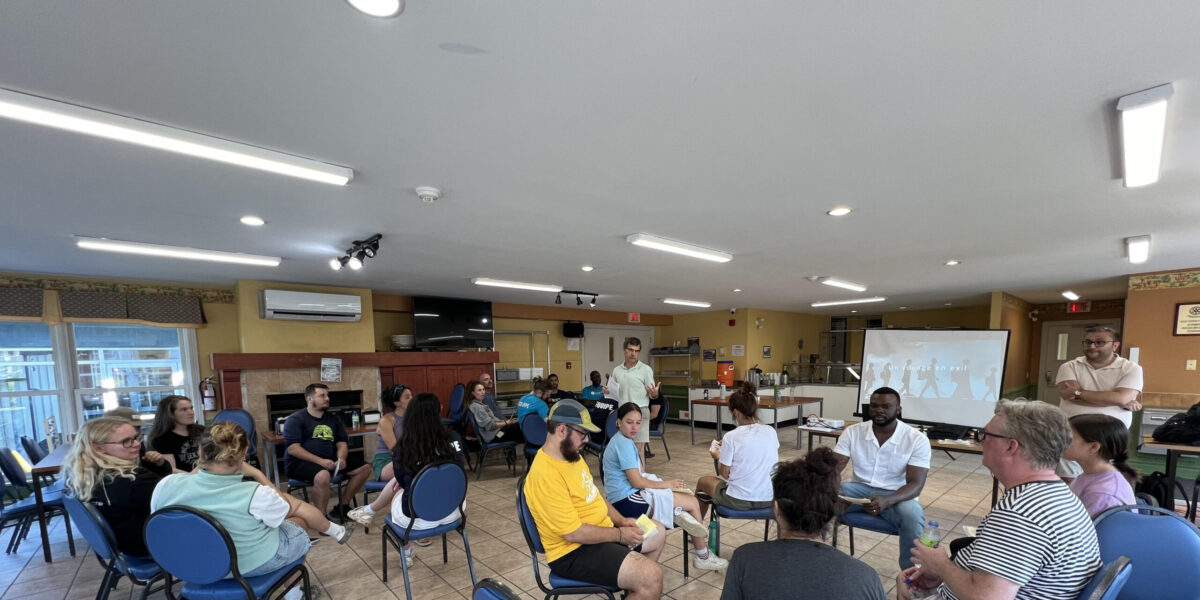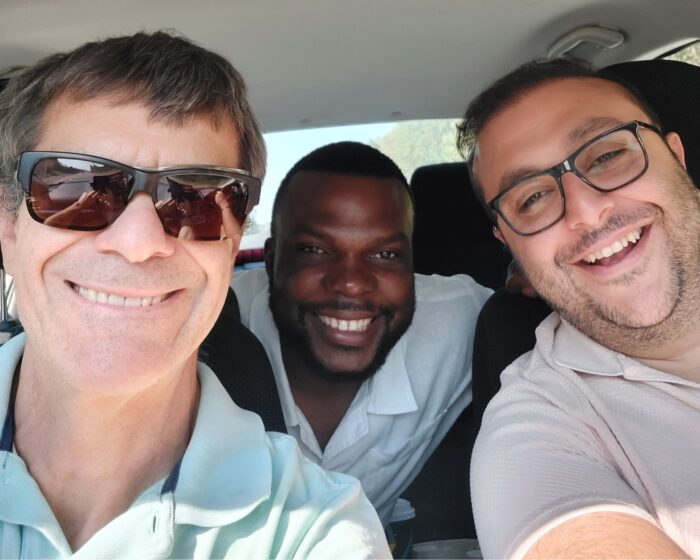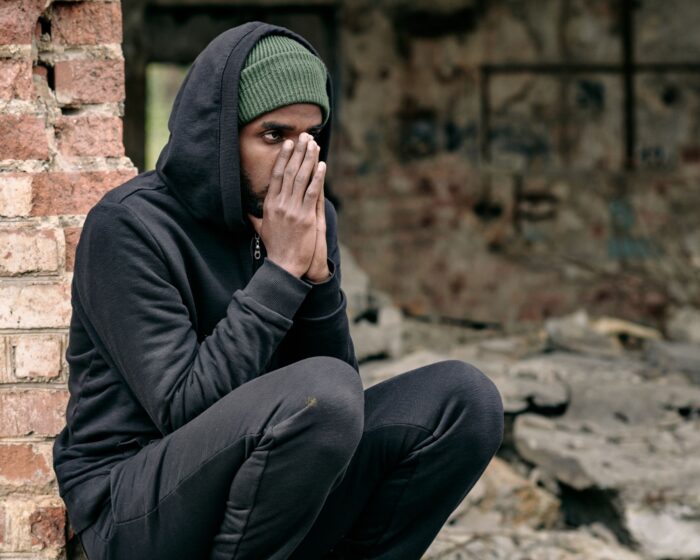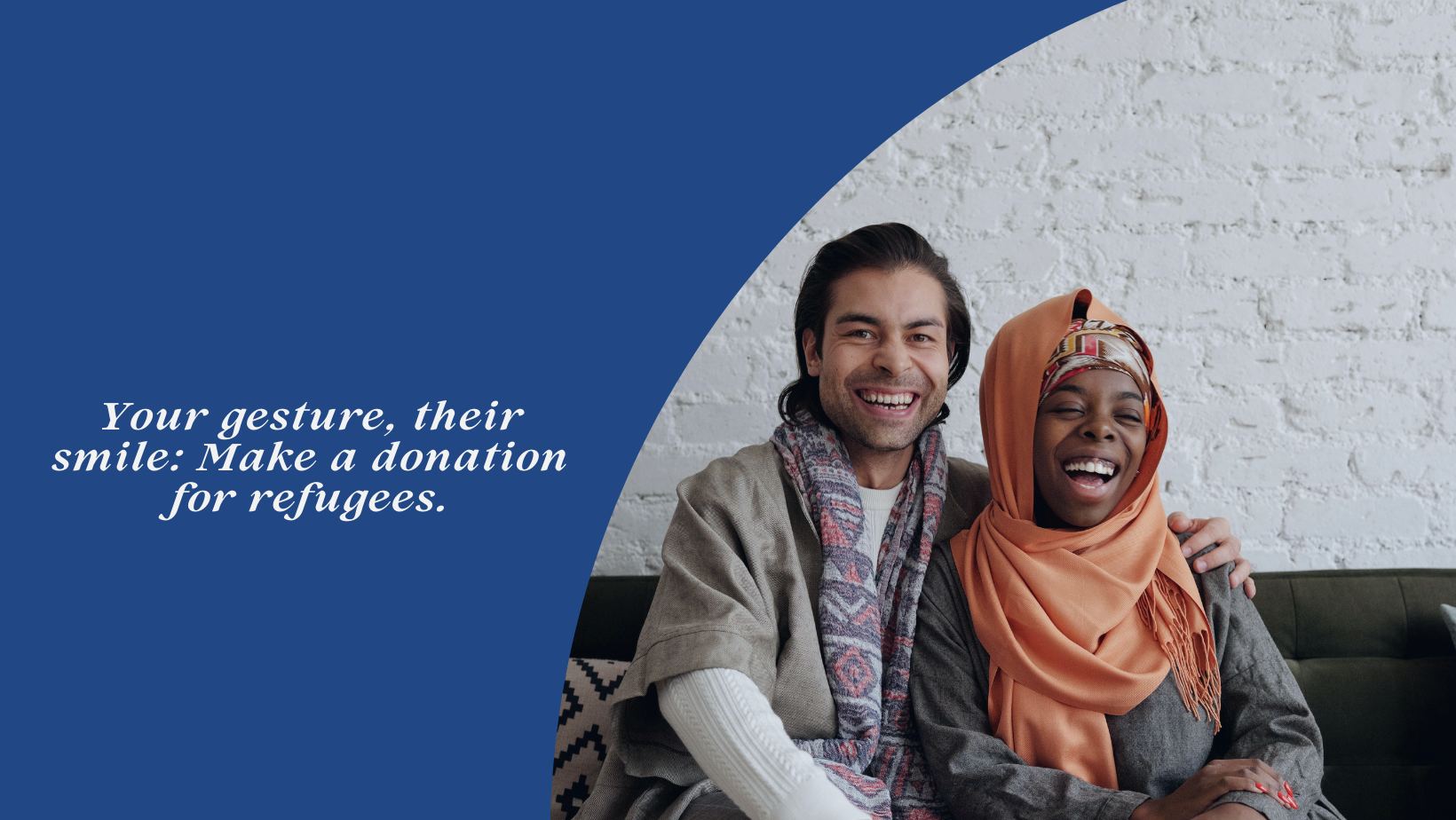“A Journey Into Exile” through the eyes of Jean Gardy Joseph, SJ.
11 October 2024|Joanna Kozakiewicz

A few members of JRS Canada travelled to Quebec City in September to collaborate with Motivaction Jeunesse, a non-profit group that aims to “promote the integration and retention of young people through meaningful experiences”, as stated on their Facebook page.
Among our team, a new member had the opportunity to attend our “A Journey into Exile” session. Jean Gardy Joseph, a native of Haiti who grew up and completed his classical studies in his native country. After completing his classical studies, he entered the Jesuit novitiate in Haiti. As a Haitian Jesuit, he continued his studies in philosophy and the humanities at the Instituto Superior Pedro Francisco Bonó in the Dominican Republic. He holds a degree in philosophy from the Gregorian University. Jean Gardy is currently pursuing his training as a Jesuit regent in Montreal. As part of his commitments, he works with the Jesuit Refugee Service (JRS) as a community worker.
In this interview, Jean Gardy shares his impressions of “A Journey Into Exile” session.
Jean Gardy, how did you experience your first “A Journey Into Exile” session ?
My first session of “A Journey Into Exile” was an exceptional experience that transformed my perception of the lives of refugees. It gave me a deeper understanding of the complexity and uncertainty that characterizes their fate. Immersed in the reality of uprootedness, I felt the pain, suffering and precariousness of those fleeing war, persecution or intolerable living conditions. This immersion made me realize the scale of the sacrifices imposed on these people, whose destiny is marked by uncertainty and danger.
Can you describe what an in-person session of “A Journey Into Exile” is like?
It offers an intense immersion in the reality of refugees, prompting deep reflection about their journey. From the outset, participants are directly involved, with fourteen activities designed to awaken emotions such as vulnerability, compassion and solidarity.
The session symbolically begins with the removal of shoes, encouraging empathy with those fleeing their country. Then, poignant testimonials and videos illustrate the difficulties encountered. Participants must then make crucial decisions about what to take with them into exile, and consider the economic and physical risks involved.
Refugees’ choices are also influenced by their geographical location, some choosing to stay in camps, others to cross clandestinely, on foot or by boat. Finally, the session highlights the fact that, even once they have arrived in a host country, their future depends on acceptance by the host society.
What struck you the most?
What struck me most during this experience was the revelation of my own lack of understanding of the lives of refugees. Although I had spent many hours reading articles and watching documentaries about their condition, “A Journey Into Exile” session made me realize just how incomplete my perception was. It was a real shock, a realization that told me: “No, you don’t know anything yet.” For me, it was an opportunity to learn in a new way.
The reactions of the other participants in this immersion also testified to this collective awareness. Many expressed their surprise, admitting they had never imagined the extent of the refugees’ suffering. They even suggested that the simulation should be incorporated into educational programs, so that teachers and students, especially those working with refugees, could also experience this often overlooked reality. Such an initiative would help create a more empathetic and respectful welcoming environment, based on a better understanding of the challenges these people face.
Were you really able to put yourself in the shoes of the refugee in this exercise?
Absolutely. Even if you’re new to this exercise and don’t know the details, the dynamism of the session inevitably puts you in the refugee’s shoes. Indeed, throughout the exercise, you take on the role of the refugee: you’re the one who makes the tough decisions they face, you’re the one who has to make choices that are crucial to your survival. This deeply immersive experience enabled me to truly put myself in the shoes of these people in exile, symbolically sharing their journey and their situation.
Through this transformative simulation, I felt the suffering, desolation, loneliness, psychological pressure, shame, rejection, discrimination, pain, hunger and misery that so many refugees endure. This experience was not only intellectual, but above all emotional, touching me to the very depths of my being. For me, it was a true experience of the heart and guts, a plunge into the heartbreaking reality of these uprooted souls. What gave me hope was that, despite all the hardships they go through, refugees’ lives don’t end with this difficult situation. Another life awaits them in the country they wish to reach, just as we experienced at the end of this exercise.

Our team on the road to Quebec City for a session of “A Journey Into Exile”. From left to right: Norbert Piché, National Director, Jean-Gardy Joseph, Community Worker and Tevfik Karatop, Project Manager at JRS Canada.
Were there any tough decisions to be made during the simulation that surprised you? What were those decisions?
Yes, of course. Right from the second part of the exercise, I was surprised by the difficulty of the decisions I had to make. Placed in the situation of a refugee with only two minutes to prepare for exile, I was forced to choose three essential items from among a bottle of water, food, identity documents, clothes, a telephone, medicines, diplomas and family photos. Not being able to take everything with them, and knowing that exile is an imposed and unplanned decision, each choice proved to be fraught with consequences.
What particularly struck me was the realization that the lives of refugees are based on decisions made in total uncertainty. Nothing is certain, and every decision can have vital consequences, which explains why so many refugees disappear or die.
A key moment in the simulation was when I had to choose between several routes to reach Europe: cross Bulgaria on foot, take a boat across the Mediterranean, take an overland route via Istanbul or return to my country. Each option involved extreme risks: drowning, border patrols, or a return in terror. At that point, I didn’t know which choice to make, as each seemed to lead to a dead end. This experience made me realize just how impossible refugee decisions often are, and yet they have to be made under the pressure of urgency.

What did you realize during this simulation?
Through the simulation, I became aware of the intensity of the suffering endured by those who have to face considerable physical and psychological dangers. The uncertain journey to a new land is both perilous and uncertain, marked by hunger, precariousness and, sometimes, death. It made me reflect on the scale of the sacrifice of the thousands of people who have perished crossing the Mediterranean, the Rio Grande or other dangerously secure borders. When I think of this experience, I also think of the lives lost in refugee camps, in inhospitable forests, and the many tragic accounts of rape and deprivation.
Do you think that “A Journey into Exile” is a good representation of the situation faced by refugees?
I think “A Journey Into Exile” is a very accurate portrayal of refugee situations. That’s precisely the impression I had throughout this immersive experience. The exercise is so realistically designed that it really put me in the shoes of a refugee. To take part in this simulation is to experience, through a symbolic prism, the journey of a refugee, with all the uncertainties, agonizing choices and insurmountable obstacles they face.
After the session, comments from other participants also pointed in this direction. Many felt, as I did, that “A Journey Into Exile” had radically changed their perception of the refugee condition. The program gave me a new perspective on how to relate to them, with deeper understanding and renewed compassion. It was a life-changing experience, shedding light on the often misunderstood reality of refugees and giving us a better grasp of the challenges they face.
Did you experience empathy for refugees through the simulation?
It was undeniably present throughout the simulation. Experiencing this reality, even in a symbolic way, aroused deep emotion in me, as well as heightened empathy for all refugees and people forced, for various reasons, to leave their country and seek refuge elsewhere. Some have neither the financial means nor the time to plan their departure, and are sometimes forced to take irregular routes in the hope of finding refuge.
Do you have anything else to say about this experience?
I’m still convinced that offering refugees a warm welcome and an opportunity to integrate means enabling them to rediscover a sense of rootedness that is often lost, while at the same time questioning our own humanity in the face of others’ distress. Not only has this experience made me more aware of their reality, it has also strengthened my commitment to promoting solidarity and compassion towards those who have suffered so much.


